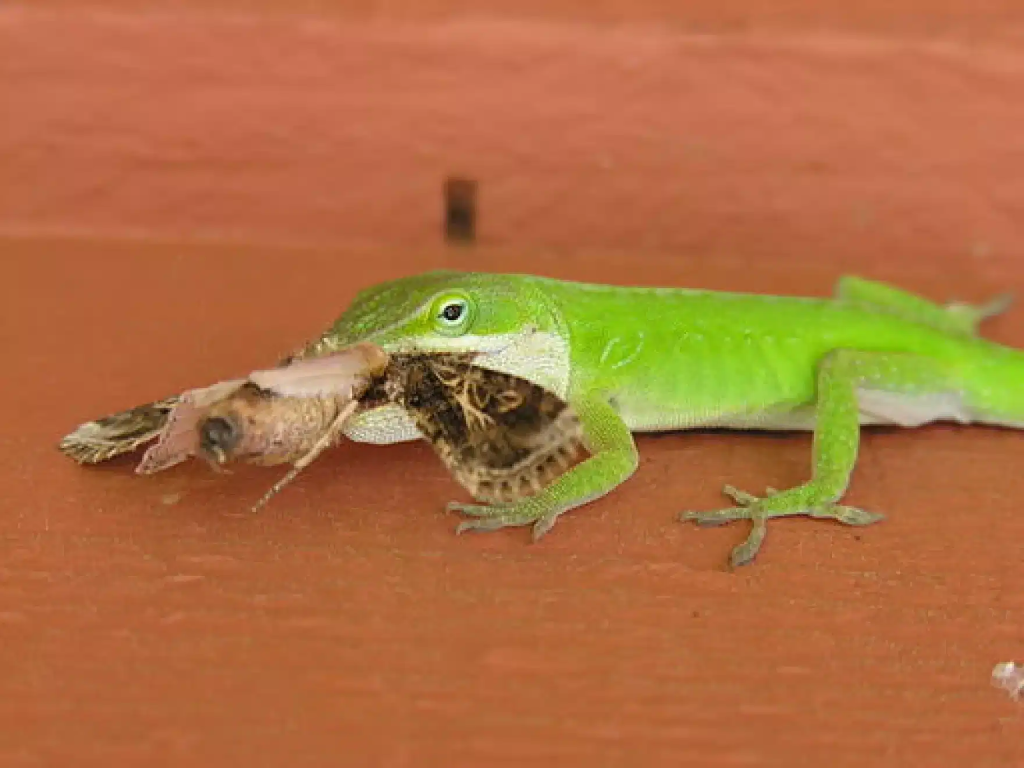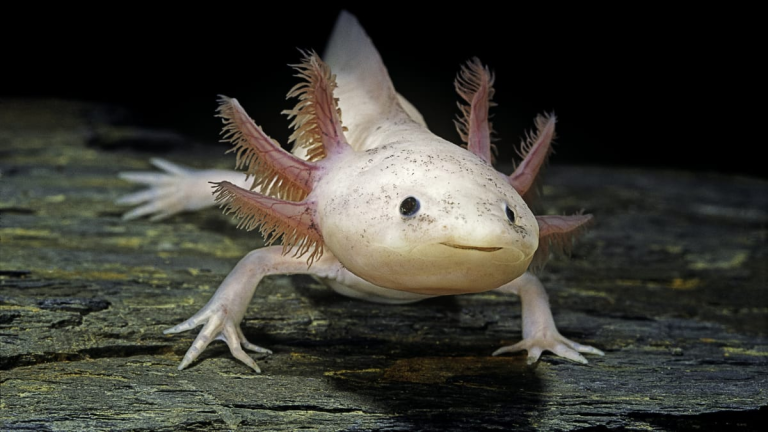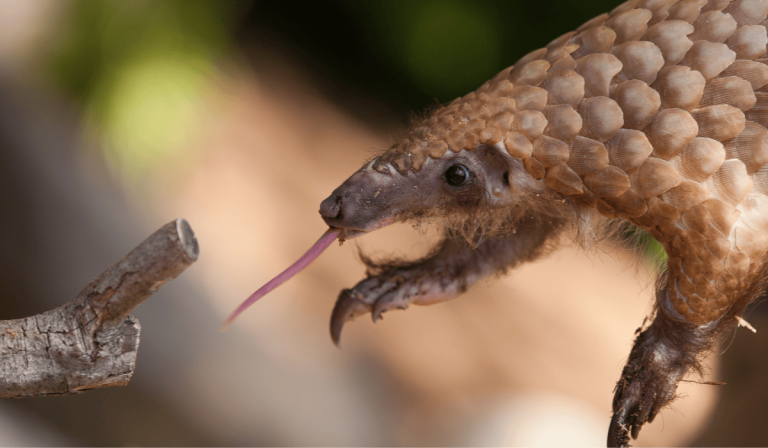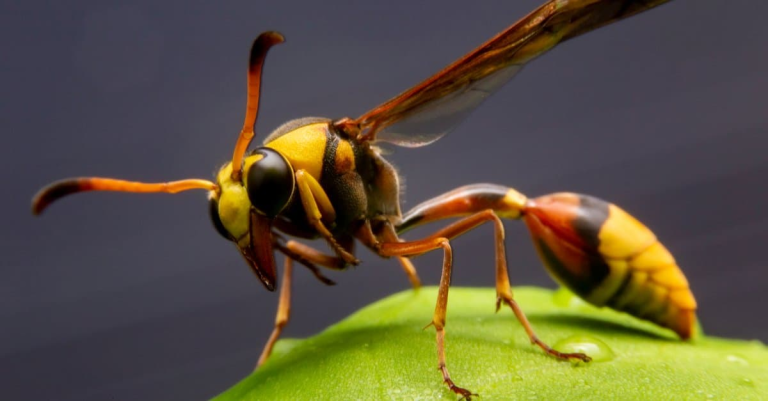What Do Lizards Eat? A Complete Expert Guide to Feeding Pet & Wild Lizards
Lizards are one of the most diverse groups of reptiles on the planet, found in deserts, forests, jungles, mountains, and even suburban gardens. Because they live in so many different environments, their diets can vary dramatically — from tiny insects and leaves to fruits, flowers, rodents, fish, and even other reptiles. That’s why one of the most common questions new reptile owners ask is: what do lizards eat?
Understanding a lizard’s natural diet is essential whether you’re caring for a gecko, iguana, bearded dragon, skink, or a large monitor species. Feeding the wrong foods can lead to serious problems like metabolic bone disease, obesity, digestive impaction, or vitamin deficiencies. Meanwhile, a well-balanced diet helps lizards grow properly, shed smoothly, maintain bright coloration, and stay active and healthy.
In this comprehensive guide, you’ll learn exactly what lizards eat in the wild and in captivity, how different species have different dietary needs, which foods are safe or dangerous, and how to create a nutritionally complete feeding plan. Whether you’re a beginner reptile keeper or someone researching for a school project, this article gives you an expert-backed breakdown of everything you need to know about lizard nutrition.
Let’s dive into the fascinating world of lizard diets and discover what truly keeps these incredible reptiles thriving.
Short Answer: What Do Lizards Eat?
Lizards eat insects, worms, fruits, vegetables, leaves, small rodents, and even other reptiles depending on the species. Some lizards are insectivores, some are herbivores, and others are omnivores or carnivores. Always match food to your lizard’s natural diet to keep it healthy.
Understanding Lizard Diets: Why Species Matters
Lizards belong to an incredibly diverse group of reptiles found across deserts, forests, mountains, and rainforests. Because of this diversity, their diets vary widely.
Lizard diets fall into four major categories:
1. Insectivorous Lizards (eat mainly insects)
Examples:
- Geckos
- Anoles
- Chameleons
- Bearded dragons (when young)
- Skinks
2. Herbivorous Lizards (eat plants only)
Examples:
- Iguanas
- Chuckwallas
3. Omnivorous Lizards (eat plants + animals)
Examples:
- Adult bearded dragons
- Blue-tongued skinks
- Tegus
4. Carnivorous Lizards (eat meat, rodents, eggs, birds, reptiles)
Examples:
- Monitor lizards (Savannah, Nile, Asian water monitor)
- Komodo dragons
Knowing which group your lizard belongs to is the key to feeding them correctly.
What Do Lizards Eat in the Wild?
Wild lizards are opportunistic feeders, meaning they eat whatever their environment provides and whatever they can physically catch or consume. Because lizards inhabit nearly every type of ecosystem on Earth—deserts, rainforests, mountains, savannas, grasslands, and even urban areas—the variety of foods they encounter in the wild is incredibly diverse. Their diet is shaped not only by their species, but also by geographic location, seasonal changes, age, and body size. Understanding what lizards naturally eat in the wild helps us design appropriate diets for pet lizards and gives insight into their survival strategies.
1. Insects and Arthropods: The Primary Food Source
For the majority of wild lizards, insects are the most important and abundant part of their diet. These include:
- Crickets
- Beetles and beetle larvae
- Cockroaches
- Grasshoppers and locusts
- Moths and caterpillars
- Ants and termites
Insects provide high-quality protein, crucial fats, and essential nutrients that support muscle development, energy production, and growth. Many lizards, such as geckos, anoles, and chameleons, rely almost completely on insects to survive.
2. Worms and Soft-Bodied Invertebrates
Lizards often consume:
- Earthworms
- Mealworms in the larval stage
- Waxworm larvae
- Silkworms
- Grubs
These foods are especially valuable during rainy seasons when soil-dwelling invertebrates become more accessible. Their soft texture makes them perfect for juvenile lizards or smaller species that cannot handle harder-bodied insects.
3. Spiders, Scorpions, and Other Predatory Invertebrates
Many wild lizards have no hesitation eating:
- Spiders
- Scorpions
- Centipedes
- Solifugae (camel spiders)
Even though these creatures may be dangerous or venomous, lizards have evolved strong immune responses and fast reflexes that allow them to safely consume them. This high-protein prey is especially important for desert-dwelling lizards that have limited food options.
4. Snails and Slugs
In humid or tropical regions, wild lizards frequently feed on:
- Garden snails
- Land slugs
- Shell-less mollusks
These offer moisture, soft tissue, and a natural source of calcium from shells—vital for bone health, egg-laying females, and growing juveniles.
5. Small Fish and Aquatic Prey
Lizards living near streams, wetlands, or mangrove habitats may also consume:
- Tiny fish
- Tadpoles
- Aquatic insects
- Small crustaceans
Species like water monitors and basilisk lizards are particularly adept swimmers that actively hunt water-based prey.
6. Fruits, Berries, and Plant Matter
Not all wild lizards are strict carnivores or insectivores. Many omnivorous or herbivorous species depend on plant materials, including:
- Berries (blackberries, raspberries, mulberries)
- Fallen fruits
- Soft tropical fruits
- Flowers, petals, and nectar
- Tender leaves and shoots
Plant materials offer hydration, natural sugars, fiber, and antioxidants. For many tree-dwelling or tropical lizards, fruit is a valuable energy source during warm seasons when it is abundant.
7. Carrion (Dead Animals)
Some wild lizards, especially large monitors and tegus, will scavenge when the opportunity arises. They may feed on:
- Dead mammals
- Roadkill
- Decomposing fish
- Birds that have fallen from nests
Carrion provides dense calories with minimal effort, allowing these reptiles to conserve energy.
8. Rodents and Vertebrate Prey
Large carnivorous lizards such as monitor species often eat:
- Mice
- Small rats
- Small birds
- Baby rabbits
- Bats or nesting animals
These prey items offer extremely dense nutrition and are essential for sustaining the high metabolism of large-bodied lizards.
9. Bird or Reptile Eggs
Many lizards raid nests to consume:
- Bird eggs
- Gecko eggs
- Snake eggs
- Lizards’ own species’ eggs
Eggs contain concentrated protein and fat, making them a high-value food source in the wild.
10. Other Small Lizards
Cannibalism is a natural behavior in many lizard species. Larger lizards may eat:
- Younger juveniles of the same species
- Smaller rival lizards
- Weak or injured individuals
This behavior helps maintain population balance and provides easy protein in competitive ecosystems.
Why Wild Diets Matter for Pet Care
Wild lizard diets are naturally nutrient-dense and highly varied, consisting of dozens—sometimes hundreds—of food types throughout the year. This diversity ensures they receive all the protein, vitamins, minerals, and hydration they need for survival.
For pet lizards, replicating this variety is essential. A monotonous diet (e.g., crickets only, mealworms only, lettuce only) can lead to:
- Nutrient deficiencies
- Weak bones (metabolic bone disease)
- Poor shedding
- Stunted growth
- Obesity or malnutrition
By understanding what lizards eat in the wild, owners can build healthier, more balanced diets that closely mimic their natural feeding behavior.
What Do Pet Lizards Eat? (Complete Food Lists by Category)
1. Foods for Insectivorous Lizards
Insectivorous lizards make up the largest group of pet lizards, including geckos, anoles, chameleons, young bearded dragons, and many skinks. These species rely heavily on insects for protein, hydration, vitamins, and natural behavioral enrichment. Because they are active hunters in the wild, providing a varied insect diet not only supports their health but also stimulates natural instincts like stalking, pouncing, and tongue-flicking.
Best insects to feed
These insects offer high-quality protein, good fat ratios, and natural movement that encourages healthy activity:
- Crickets – affordable, widely available, easy to gut-load.
- Dubia roaches – one of the best staple feeders; high in protein, low in fat.
- Black soldier fly larvae – naturally high in calcium, great for preventing metabolic bone disease.
- Silkworms – soft-bodied, nutrient-rich, excellent for sensitive stomachs.
- Hornworms – hydrating, low-fat worms that support hydration and digestion.
- Mealworms (in moderation) – harder exoskeleton; use sparingly.
- Superworms (treat only) – high fat and very active; good for variety but not as a daily feeder.
Occasional options
Use these as treats due to higher fat content:
- Waxworms – extremely fatty; perfect for picky eaters or underweight lizards.
- Butterworms – soft, sweet, and palatable; great for appetite stimulation.
- Fruit flies – ideal for hatchlings or tiny lizard species.
Avoid these
Certain insects can cause serious health issues:
- Wild-caught insects – risk of pesticides, parasites, or disease.
- Fireflies – highly toxic, even deadly for many lizard species.
- Large mealworms for small lizards – risk of impaction and digestive trouble.
Providing a rotation of insects is crucial. A single insect type—even healthy ones—can lead to nutritional imbalance if overused.
2. Foods for Herbivorous Lizards
Herbivorous lizards such as iguanas, uromastyx, and chuckwallas rely primarily on plant-based nutrition. Their digestive systems are adapted to breaking down fibrous vegetation, which means they require high-fiber, high-calcium, low-fat diets. Feeding the wrong greens or too much fruit is one of the most common reasons these species develop health issues in captivity.
Best vegetables for herbivorous lizards
These nutrient-dense greens should form the core of their diet:
- Collard greens – excellent calcium source.
- Mustard greens – strong flavor, high in vitamin A.
- Turnip greens – low oxalates, high fiber.
- Dandelion greens – rich in calcium and antioxidants.
- Squash (all varieties) – shredded or finely chopped.
- Bell pepper – adds color, moisture, beta-carotene.
- Green beans – provides plant protein and fiber.
Safe fruits (small amounts only)
Fruits are high in sugar, so they should make up no more than 5–10% of the diet:
- Mango
- Papaya
- All berries
- Melon
- Apple (peeled and chopped)
Fruits can be used to encourage picky eaters or as training rewards.
Avoid foods high in oxalates or goitrogens
These foods interfere with calcium absorption or thyroid function:
- Spinach – extremely high in oxalates.
- Kale – should be occasional, not a staple.
- Iceberg lettuce – nutritionally empty, mostly water.
- Cabbage – can suppress thyroid activity in large amounts.
Herbivorous lizards thrive on variety, so rotate greens regularly to mimic the nutritional diversity they’d encounter in the wild.
3. Foods for Omnivorous Lizards
Omnivorous lizards—such as adult bearded dragons, blue-tongued skinks, and some tegus—eat both plant and animal matter. Their diet needs to be carefully balanced because too much insect protein can cause obesity, while too little can result in muscle loss or stunted growth.
Ideal balanced plate
A good general guideline for omnivorous species is:
- 50% vegetables – leafy greens, squash, bell peppers.
- 20–30% insects – high-protein feeders like roaches or crickets.
- 10–20% fruits – added occasionally for variety.
- Small amounts of cooked meats or eggs – supplemental protein sources.
Protein options for omnivores
These foods support muscle development and energy:
- Crickets
- Dubia roaches
- Black soldier fly larvae
- Cooked chicken (plain, no seasoning)
- Boiled egg (soft or hard cooked)
- Earthworms – good moisture and soft protein.
Avoid giving raw meats due to bacteria risks, and never season foods with salt or spices.
4. Foods for Carnivorous Lizards
Carnivorous lizards, including many monitor species, tegus, and large skinks, require high-protein, meat-based diets. These reptiles have powerful digestive systems built for breaking down whole prey items. Feeding them appropriately supports healthy growth, strong muscles, and balanced nutrition.
Appropriate prey for carnivorous lizards
These foods closely mimic natural hunting diets:
- Mice (live or frozen-thawed) – the most common whole-prey item.
- Chicks (day-old chicks) – high protein and low fat.
- Quail eggs – nutritious and similar to wild egg prey.
- Fish (boneless, no raw salmon) – white fish only; salmon may contain parasites.
- Small reptiles – sometimes used for large monitor species in controlled settings.
- Insects as snacks – roaches, crickets, hornworms for enrichment.
Whole prey provides balanced nutrition because it includes muscle, bone, organs, and natural calcium.
Foods to avoid
Some foods cause digestive or nutritional problems:
- Overfeeding fatty rodents – leads to obesity and liver issues.
- Raw pork – risk of parasites and pathogens.
- Large bones – can cause choking or internal injury.
Carnivorous lizards must always be supervised when eating larger prey to prevent accidental injuries or choking.
Safe vs. Unsafe Foods for Lizards
Safe foods
- Insects (store-bought)
- Dark leafy greens
- Squash
- Blueberries
- Bell peppers
- Cooked lean meats (for omnivores)
- Commercial lizard pellets (species-specific)
Unsafe foods
- Citrus fruits
- Onions, garlic
- Spinach (excess oxalates)
- Fireflies
- Rhubarb (toxic)
- Avocado
- Processed human foods
- Sugary fruits in excess
How Often Should You Feed a Lizard?
Feeding frequency depends on species and age.
Baby lizards
- Eat daily
- High-protein diet
- Multiple small meals
Adult insectivores
- Feed daily or every other day
- Offer gut-loaded insects
Adult omnivores
- Main meal daily
- Veggies + insects + occasional fruit
Herbivorous lizards
- Fresh greens every day
Large carnivores
- Rodents 1–3 times per week
Seasonal Feeding Considerations
Just like hedgehogs, lizards adjust their diet and activity with the seasons.
Spring/Summer
- Increased appetite
- More insects and protein
- More hydration from fruits and vegetables
Autumn
- Gradual reduction in protein
- Increase greens for herbivores
- Support mild pre-brumation slowdowns
Winter
- Many lizards brumate (reptile hibernation) and stop or reduce eating
- Maintain correct temperature and lighting
- Pet lizards kept awake may need smaller, less frequent meals
Tips for Feeding Lizards Safely
- Always gut-load insects 24 hours before feeding.
- Dust insects with calcium powder 3–4 times per week.
- Use vitamin D3 supplements for indoor lizards.
- Remove uneaten food to avoid mold.
- Offer food in a shallow, escape-proof dish.
- Monitor weight to prevent obesity.
- Provide fresh water daily, even for desert species.
- Never feed wild insects due to pesticides and parasites.
EEAT Section (Expertise, Experience, Authoritativeness, Trustworthiness)
Expert Insights
This guide is based on established reptile nutrition research, veterinary recommendations, and real-world keeper experience from caring for geckos, iguanas, chameleons, monitors, and bearded dragons.
Why Trust This Information?
- Diet recommendations follow guidelines from reptile veterinarians and zoological standards.
- Food lists are aligned with well-known reptile resources and herpetology studies.
- Each category is species-specific to prevent dangerous feeding mistakes.
Experience-Based Notes
Common issues like metabolic bone disease, obesity, and digestive impaction almost always come from improper diet — making correct feeding essential for long-term lizard health.
FAQ About Lizard Diet
Q1: Can lizards eat fruit?
Yes, but only omnivorous and herbivorous species. Insectivores should avoid fruit due to high sugar.
Q2: Is it safe to feed lizards mealworms every day?
No. Mealworms are fatty and should be treats. Rotate insects for balanced nutrition.
Q3: Do lizards drink water?
Yes. Even desert species need hydration. Mist chameleons; provide bowls for most others.
Q4: Can lizards eat human food?
No. Avoid processed foods, salty items, spices, bread, dairy, and sugary foods.
Q5: What should I do if my lizard stops eating?
Check temperature, lighting, shedding cycles, and stress factors. If refusal lasts over 48–72 hours, consult a reptile vet.
Q6: Can lizards eat pinky mice?
Only carnivorous or large omnivorous species such as monitors and tegus. Never feed rodents to small lizards.
Q7: How do I know my lizard is getting enough calcium?
Strong bones, active movement, and proper shedding indicate good calcium intake. Supplements may be required depending on UVB exposure.










